14 Types of Spinach to Grow & Add Variety to Your Meals
Author: Jen Worst | Editor: Omar Alonso
Review & Research: Jen Worst & Chris Miller

We’ve all watched Popeye the Sailor gaining muscles after eating a can of spinach, and though it sounds gimmicky, it can be true. You'd do a lot better to add any types of spinach to your diet in place of some of the less "good for us" foods.
We always use only a few spinach types in our meals and smoothies. But there are actually plenty of varieties you can try.
So here we’ll discuss the spinach of different shapes and flavors. This way, you’ll get to know your options well and add diversity to your diet. Let’s get started, shall we?
14 Types of Spinach
Before we look at the three classifications of species of spinach, it is time to look at the types of spinach. So, let’s proceed.
New Zealand Spinach
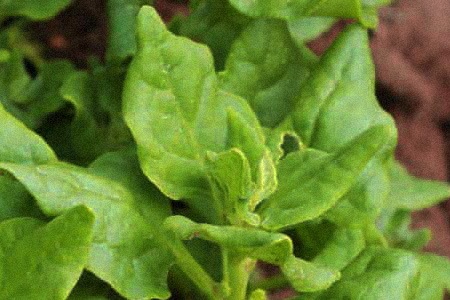
As the name suggests, this spinach comes from New Zealand, and is found all throughout the west coast of the U.S. on sand dunes, bluffs, and the wetlands. It thrives during the summer months, unlike regular spinach, which is this spinach's main benefit. This spinach comes with dark green leaves and succulent type of textures.
However, these greens are pretty weak and tend to melt when you cook them at a low temperature. You can also add this spinach as a raw ingredient in your recipe, and it will melt in your mouth right away.
Depending on its geographic location, it is also known as sea spinach, Botany Bay spinach, tetragon, kōkihi in Māori, etc.
Teton Spinach
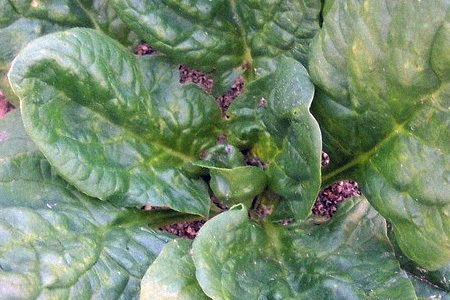
When you are looking for a mild flavor and smooth leaves, Teton is the right kind of spinach for you. These greens are full of vitamin A, C, and B complex. Moreover, they are not vulnerable to mildew or any other kind of damages.
The leaves of Teton are oval-shaped and come in dark green colors. It takes up to 40-45 days to harvest, and you can store it in the freezer for as long as you want.
Space Spinach
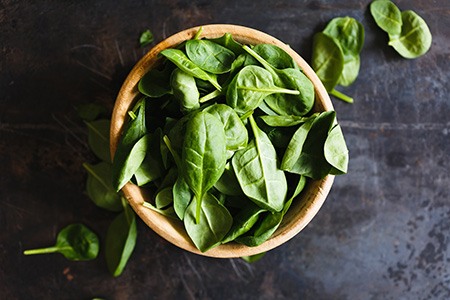
If you ask about the most common types of spinach, space spinach will be on the list for sure. It has spoon-shaped leaves, and the color is not that dark compared to the other types.
The space spinach is easy to clean as the leaves are held upward from the ground, meaning you have to get rid of less dirt. Additionally, space spinach is resistant to Downey Mildew and Cladosporium leaf spots.
It takes up to 40-45 days to mature and adds a fresh, tangy flavor to your meal. However, this plant is a bit sensitive to the acidity in the soil, so the growers need to keep that in mind. If you're really into backyard farming, you can handle it without a problem.
Red Cardinal Spinach

This spinach adds a dash of color to your food and makes it look more exciting. Furthermore, the color of the maroon-red vines will be lost when you cook it, so you can eat it raw to enjoy its aesthetically pleasing look.
People often use this spinach as an alternative to baby greens in their salad, and you can add your favorite seasonings to enhance its flavors. However, these greens bolt pretty quickly; hence, you need to maintain an optimal temperature of 45 to 75 degrees Fahrenheit so they can thrive.
Tyee Spinach
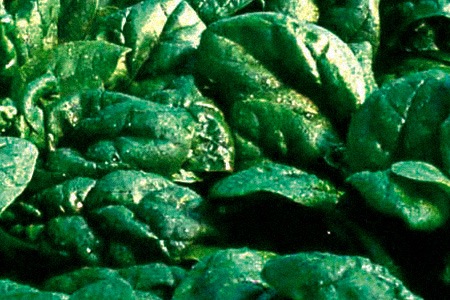
Though Tyee is meant to be grown during colder seasons, you can grow it in an area that mostly has mild winters. This kind of spinach comes with intensely green and heavy leaves and offers amazing fragrances that take your meals to a whole new level.
Tyee isn’t vulnerable to the common spinach diseases and downy mildew. This spinach plant takes up to 35-45 days to mature, and you need to maintain at least 40-degree Fahrenheit to ensure its appropriate growth.
Catalina Spinach
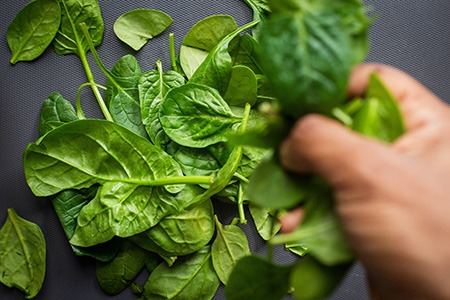
Maybe you haven’t heard about Catalina but surely know the baby leaf spinach types. Though it takes a long time to reach the harvesting point, it is worthy of all the troubles.
Catalina spinach comes with thicker, greener leaves, and the texture is smooth. The leaves are kind of a spear shape and slightly twisted. Moreover, the leaves are not too thick or thin, making them suitable for many recipes.
It has a nutty flavor, and the aroma is not that intense. So, when seeking mild-flavored spinach for your meal, you can consider this one.
To harvest this spinach, you will have to wait up to 48-50 days. And these greens are somewhat resistant to bolting, which is another fact about them.
Indian Summer Spinach
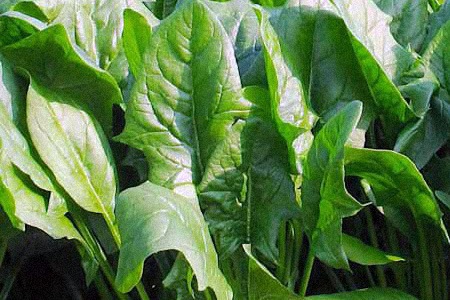
This spinach belongs to the semi-savory class and is a high-maintenance one. Meaning, you have to be dedicated to its nurturing if you want to grow it in your backyard.
The Indian Summer kinds of spinach can be grown in summer, fall, spring; whenever you want. And they make your dish super flavorful with their amazing aroma.
These types of spinach take around 35 days to mature, and the leaves have a smooth texture, suitable for different kinds of dishes, especially made more interesting with different types of spices.
Giant Noble Spinach
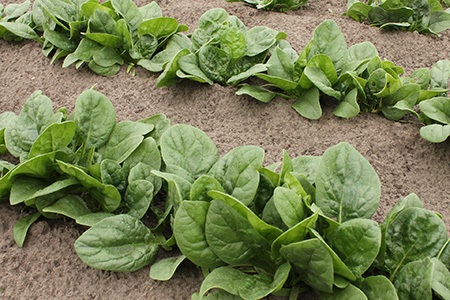
These spinach varieties are popular among cooking enthusiasts and professional chefs, and their leaves can grow up to 25 inches. The giant noble spinach comes with large flat leaves and long stems.
If we talk about the taste, it belongs to the savory kind. Hence, it can be added to any dish; you can cook it or eat it raw. Though the leaves are larger, they are pretty tender. As a result, they cannot be cooked for long hours or on high heat.
The Giant Noble Spinach gets matured in 45 days, and you don’t have to spend an extensive amount of time on its maintenance. And it bolts slowly, which makes it a grower-friendly green.
Regiment Spinach
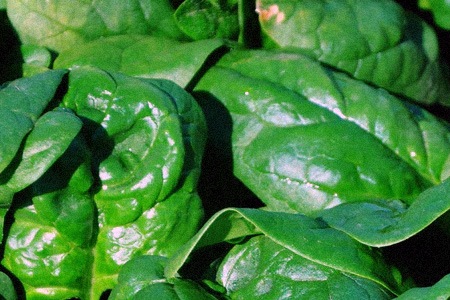
The most important fact you need to know about the Regiment spinach is that you need to plant them in cooler soils. Therefore, this spinach can only be planted at the end of fall or the beginning of spring. Otherwise, they will not have an optimal environment to grow.
This spinach has arrow-shaped leaves and dark green aesthetics. And it will take around 37 days to reach the harvesting period, which is relatively faster than the other kinds.
Carmel Spinach
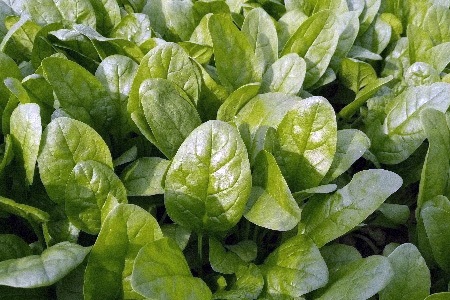
This type of spinach falls into the savory classification and has amazing-looking dark green leaves. These greens grow faster and are not vulnerable to mildew, making them easy to maintain.
You can eat either matured Carmel or baby leaves, but the soil’s pH level must be around 6.5 – 7.5 to maintain their optimum growth. Additionally, the temperature has to be under 85-degree Fahrenheit.
Emperor Spinach
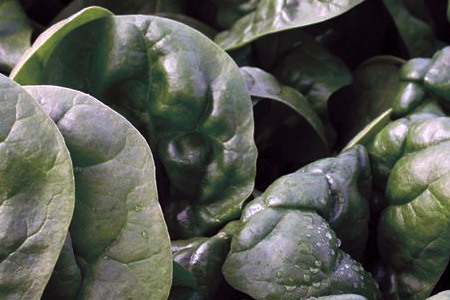
The Emperor Spinach is a semi-savory green and has a medium growth range. Dark green leaves and crispy texture add a mild flavor to your recipe.
This spinach is known by many names, especially Malabar spinach. They come with large water-filled leaves and thrive at around 90 degrees Fahrenheit.
Hammerhead Spinach
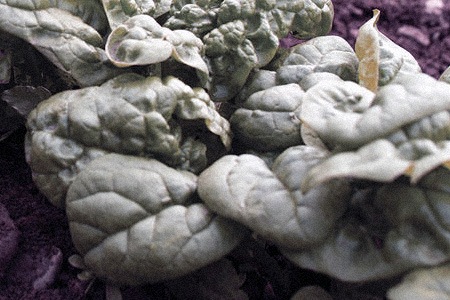
If you're looking for a spinach high in fiber and prefer the savory types of spinach, look no further than Hammerhead spinach. They feature the typical darker green colored leaves with soft round tips.
People will cook Hammerhead spinach lightly so it retains some of its crisp nature or they opt to eat it raw, usually as a salad base. It can also be chopped and sprinkled across salads as one of the types of garnish.
These are a great choice to grow due to their harvesting period occurring within 27 days. This fast rate of growth and especially with bolting means you'll enjoy a larger harvest in a quicker amount of time.
Bloomsdale Spinach
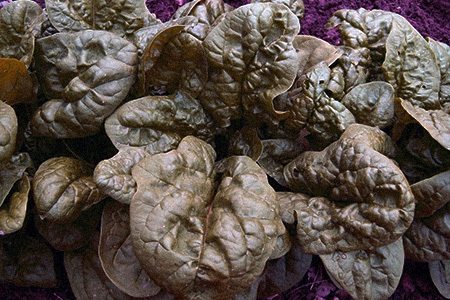
These types of spinach are beautiful to look at, with their long, dark green leaves. They can be used for making delicious smoothies, thanks to their rich and juicy texture.
Furthermore, when you cook this green, it adds a savory flavor to your dish, and the texture becomes soft and squishy if you don’t cook them at the correct temperature.
These different kinds of spinach require direct sunlight to grow properly and mostly flourish during fall.
Baby Spoon Spinach
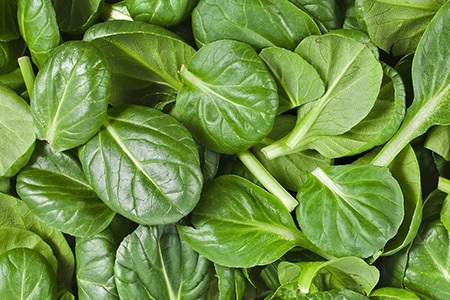
This spinach is considered the best to use as a raw ingredient in your meals. They are easy to wash, and you can eat a mouthful of them at once.
Baby spoon spinach has a soft texture and offers a sweet-savory taste. Even the stems and baby leaves are super flavorful, not just the mature ones.
As these baby spoon spinach types come with tons of folic acid and beta carotene, you will get amazing health benefits from eating them. And they are easy to maintain and store, so this type of spinach is quite a household name.
14 More Types of Spinach
We, of course, can't list every single one of the spinach species. We shared the most commonly available and enjoyable varieties of spinach above. But that doesn't mean the list below isn't equally fun to grow and enjoy as a meal:
- Kolibri Spinach
- Palco Spinach
- Tasman Spinach
- Gazelle Spinach
- Wood Pecker Spinach
- Kookaburra Spinach
- Reflect Spinach
- Flamingo Spinach
- Seaside Spinach
- Renegade Spinach
- Avon Spinach
- Red Kitten Spinach
- Acadia Spinach
- Crocodile Spinach
- Corvair Spinach
Once you've exhausted your exploration of the 14 main kinds of spinach mentioned at the top, you can continue your journey through these additional 14 different types of spinach.
And even then, you can move on to some "not official types of spinach" like New Zealand spinach, Malabar spinach, and Longevity spinach. These are great substitutes and you won't really know the difference, but retain all of the good aspects of this wonderful vegetable.
Classification of Spinach Species
Before we get to know all the different types of spinach, we need to learn about its classifications. The spinach varieties fall under these three classifications:
- Savory Spinach
- Semi-savory Spinach
- Smooth-Leaf Spinach
Savory Spinach
Well, savory spinach is the most basic kind; you will see them in every store or backyard. These spinach varieties come with crispy, wrinkly, and intense dark green leaves. You can cook them for hours without ruining the texture, making them quite popular.
Semi-Savory Spinach
It tastes savory like the previous one, but the leaves aren’t wrinkly. And the semi-savory spinach is not that vulnerable to diseases, which makes them suitable for planting in gardens.
Smooth-Leaf Spinach
These leafy kinds of spinach have wrinkle-free leaves; hence, super easy to wash. And the smooth-leaf spinach is widely available everywhere. Instead of being savory, these varieties of spinach come with a slightly sweet flavor, making them suitable for any recipe.
Types of Spinach for Add a Boost to Your Meals
The varieties of spinach are great for any meal; from stir fry to smoothies, you can add this superfood into any dish to enhance its taste. And it offers tons of outstanding benefits for your body, which is a bonus.
Now that we’re done discussing the types of spinach, you can try a different one every day to change the taste. This way, your meals won’t be boring anymore, and you can get hale and hearty in no time.



